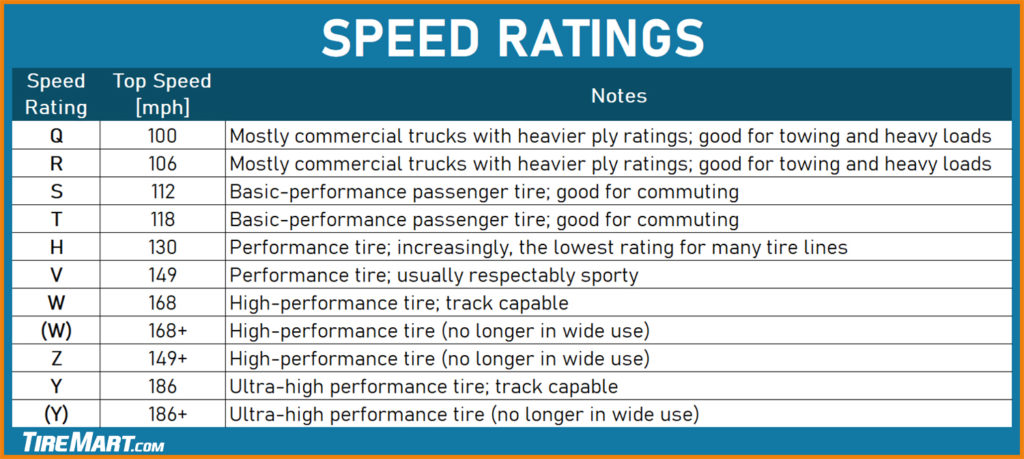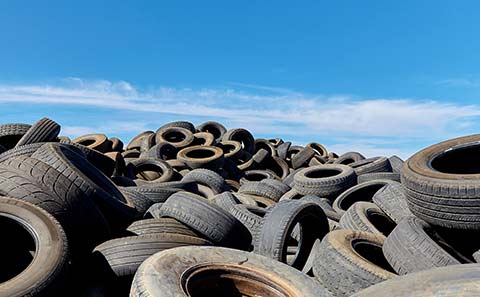The tire speed rating chart can be more than a little confusing, so let’s demystify them. We should not look only at what the letters stand for! We also need to consider how to figure out which rating is right for your vehicle.
First a quick review of what commonly found speed ratings stand for:

What “Speed Rated” Means
Manufacturers can label tires as “speed rated.
However, unless it has a DOT-authorized letter in front of it (H, V, or Y), the phrase “speed rated” only refers to DOT-approved street-use tires. Every tire that’s sold for use on U.S. public streets must be speed rated to at least 55 mph as part of the Uniform Tire Quality Grade (UTQG).
The speed rating appears at the end of the size-related information. For example, 195R60 90H, the H is the speed rating. Brands rate most of their tires at 99 mph or higher. These days, manufacturers mark even relatively inexpensive tires T (up to 118 mph). Additionally, they also rate many tire lines at least H (up to 130 mph).

“Speed rated” when used alone is just a marketing gimmick. Be cautious, because tire sellers use the phrase to describe everything! From a 118-mph top speed tire to one that can withstand occasional track use on a supercar at 186 mph or above – everything is “speed rated” according to them.
It’s sort of like “pre-approved” when you get a credit card offer. Everybody who gets the mass-mailed solicitation is “pre-approved,” but only “approved” people (without the “pre-“) get the card. Similarly, every tire is speed-rated; but manufacturers only rate tires with certain letters for higher speeds.
Who Determines Speed Ratings?
The manufacturer certifies a tire for top speed. They run the tire for the required time at the target speed on a roller-equipped testing rig. Engineers then check for damage — ply separations, cracking, chunking, excess wear, and any other failure. If it passes at the target speed, the tire model gets the rating.
A higher speed rating means, essentially, that the tire can run longer without damage at the higher temperatures generated by the sustained higher speed.
What Speed Rating Do I Need?
You don’t absolutely need a tire with a V, W, or Y speed rating if your vehicle isn’t capable of such speeds and you prefer to drive your vehicle to work at highway speeds. If you did not modify the car, you don’t need tires with speed ratings higher than the original equipment.
Vehicle manufacturers usually install governors to limit the speed capability of the original equipment tires. Conversely, tires can handle excessive speeds if the vehicle is capable of them. A tire with a larger speed rating may corner and handle better than one with a lower rating. However, it’s likely to wear out faster. Sometimes within a single tire line, tire manufacturers offer a choice in speed ratings. Just keep in mind that the warranty mileage reduces the higher the speed rating is.

If you’re a street tuner who removed an electronic governor and increased peak horsepower, you may want a tire with a higher speed rating. But if you stay within or close to speed limits, you won’t need the better rating.
You will benefit from larger speed ratings if you drive your vehicle in competitive events. In other words, if you drive your vehicle at an autocross or a timed track event. A higher speed rating should help your tires withstand the heat generated by higher G-forces. This is especially true during cornering or high-speed straight-line runs.
Just remember: Never exceed the speed rating of your tires.


